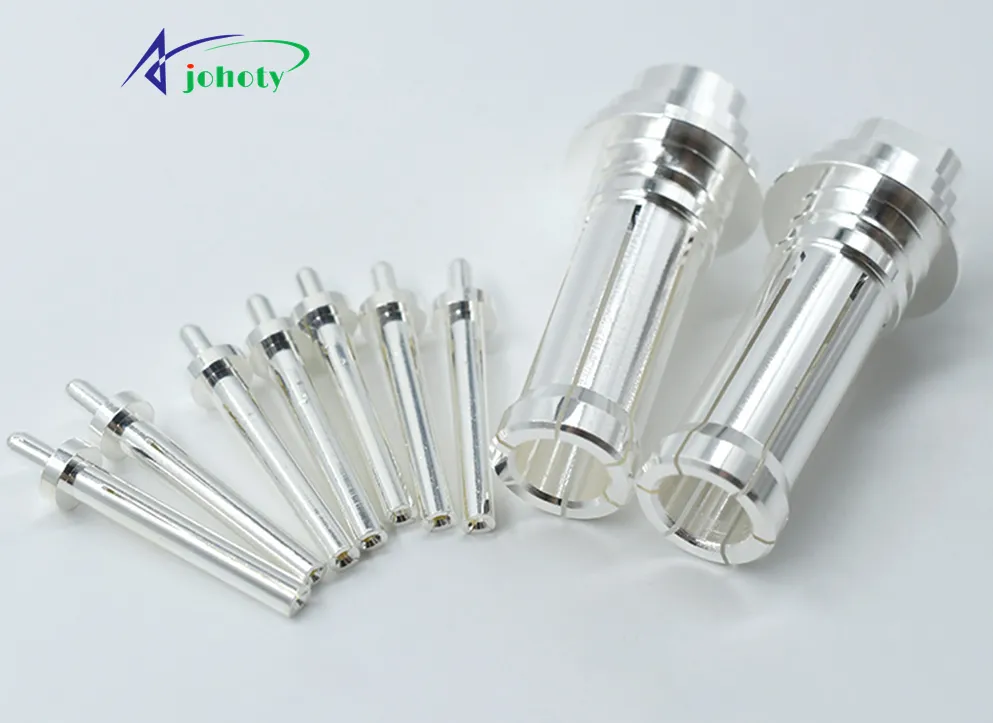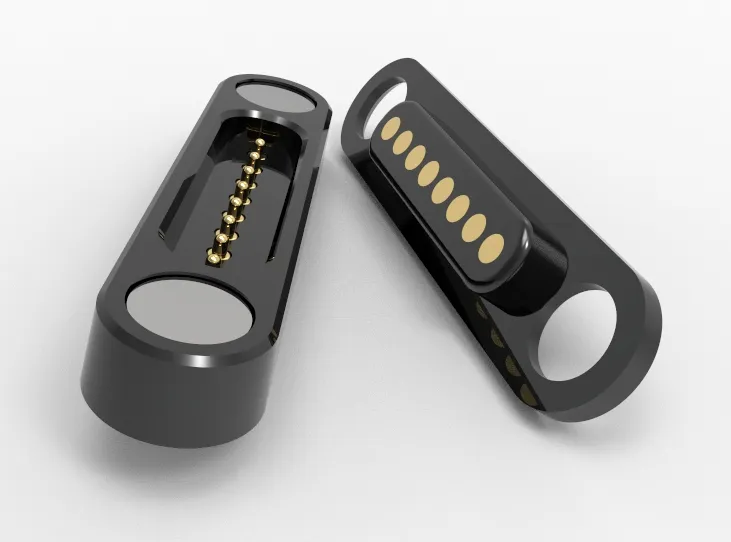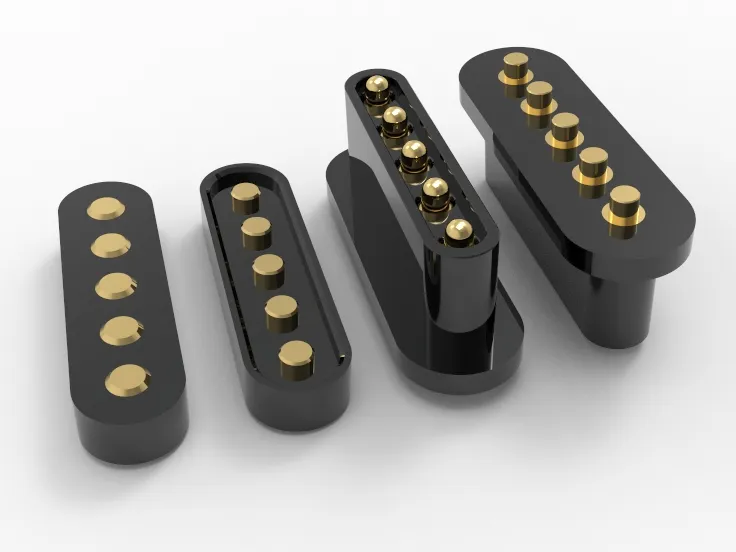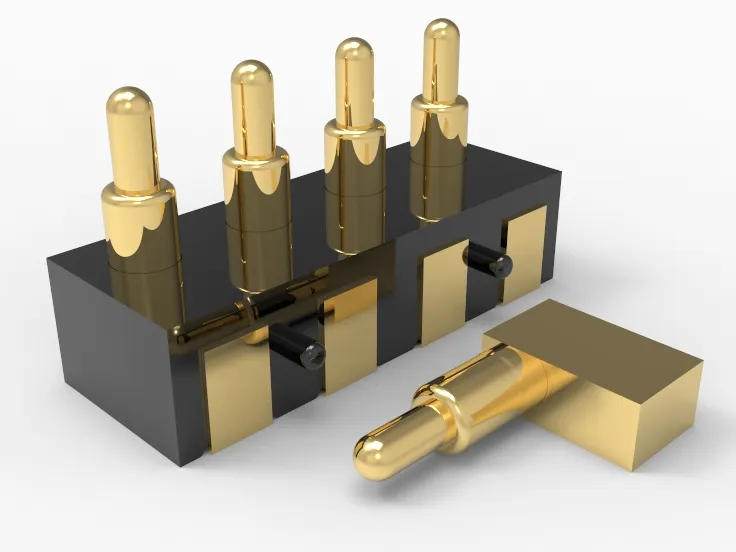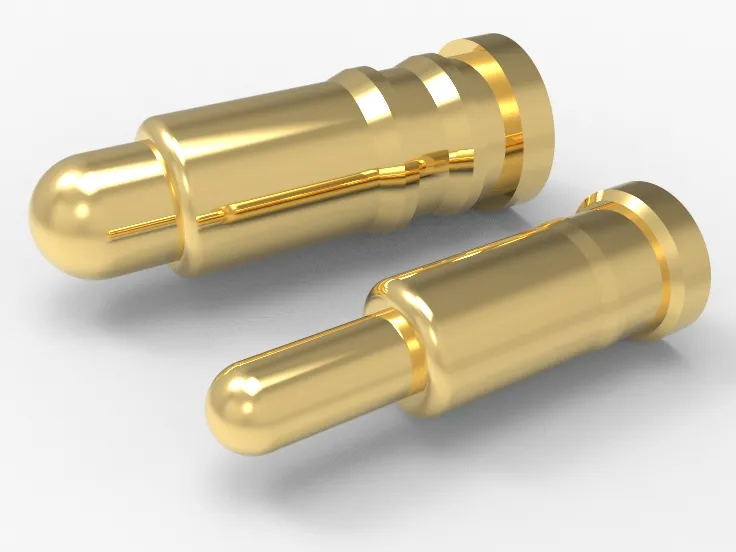What Is Design Optimization? See How Johoty’s Pogo Pins Are Optimized for Superior Quality and Affordability, Tailored to Client Specifications
Introduction: What Is Design Optimization?
- In today’s manufacturing world, tweaking the design is key to making products work better and cost less. Johoty’s Pogo Pins lead the precision connector field with exceptional design optimization capabilities, continually innovating and refining based on specific customer needs.
- This blog will explore the concept of design optimization and analyze how Johoty achieves outstanding quality and cost-effectiveness for its Pogo Pins through precise specification adjustments. Whether it’s enhancing product durability, improving conductivity, or reducing manufacturing costs, Johoty’s design optimization strategies set new industry standards.
- You’ll gain a comprehensive understanding of the importance of design optimization and how Johoty prioritizes customer needs to stay ahead in the competitive market.
Basics of Design Optimization:
1. Definition of Design Optimization:
- Design optimization for Pogo Pins involves systematically analyzing and adjusting the design and manufacturing process to balance product performance, reliability, cost, and specific customer requirements. This includes fine-tuning design parameters such as material choice, structural design, electrical performance, and mechanical properties to ensure top performance in various scenarios.
- At Johoty, the foundation of Pogo Pins design optimization lies in understanding customer specifications and using engineering techniques to customize and efficiently manufacture the product. The optimization process not only focuses on performance improvements, such as contact reliability and durability but also on cost-effectiveness, aiming to reduce production costs while maintaining quality.
- Johoty’s iterative design and rigorous testing ensure its Pogo Pins meet or exceed customer expectations, providing valuable product solutions.
2. Overview of Optimization Methods:
Optimizing Pogo Pins is essential for ensuring high performance and longevity across various applications. Johoty’s optimization methods include:
Material Selection Optimization:
- The material used affects conductivity, wear resistance, and corrosion resistance. Johoty selects high-quality conductive metals like brass, beryllium copper, or gold-plated materials. Brass is used for its good conductivity and mechanical properties, while beryllium copper is known for its strength and elasticity. Gold or nickel plating enhances conductivity and extends the lifespan of the Pogo Pins.
Structural Design Optimization:
- The structure of Pogo Pins involves aspects like pin head shape, spring structure, and sleeve design. Johoty optimizes pin head shapes to reduce contact resistance and ensure stable current transmission, with choices including pointed, round, or flat heads based on application needs.
- Spring structure optimization focuses on elasticity and lifespan. Johoty uses finite element analysis (FEA) to simulate stress and deformation, ensuring springs maintain good elasticity through repeated use.
- The sleeve design is also crucial, with Johoty optimizing the geometric shape and material choice to ensure stability during high-frequency use.

Manufacturing Process Optimization
- Improving the manufacturing process directly affects the quality and cost of Pogo Pins. Johoty uses advanced techniques like CNC machining and plating to boost precision and surface quality. Each production step is tightly controlled to ensure accurate dimensions, smooth surfaces, and consistent spring force. Automation and efficient testing equipment help reduce errors and increase production consistency.
Performance Testing Optimization
- Performance testing is crucial in Pogo Pin design to ensure quality. Johoty conducts thorough tests, including electrical, mechanical, and environmental tests. Electrical tests check contact resistance, insulation resistance, and voltage endurance.
- Mechanical tests assess insertion force, wear resistance, and durability. Environmental tests, such as high temperature and humidity and salt spray tests, verify reliability under harsh conditions.
Custom Design Optimization
- Johoty also focuses on custom designs based on customer needs. By working closely with clients, Johoty understands the application and technical requirements to offer tailored Pogo Pin solutions. Custom designs may involve non-standard sizes, special materials, or specific performance requirements. Johoty’s engineering team uses advanced simulation tools and design software to ensure feasibility and optimization.
Johoty’s Pogo Pin design optimization aims to deliver high quality and cost-effective products. Continuous technical innovation and customer-focused design ensure that Johoty’s Pogo Pins excel in various applications, meeting or exceeding customer expectations.
What Is Design Optimization? Various Challenges in Pogo Pin Design:
1. Complexity of Customer Specifications:
- Designing Pogo Pins involves meeting strict customer specs while balancing performance, quality, and cost. Customers demand high standards for electrical performance, mechanical durability, size tolerance, contact reliability, and lifespan.
- For instance, some require low contact resistance within specific temperature ranges while enduring multiple insertion cycles. Johoty must carefully control materials, manufacturing processes, and surface treatments to meet these needs.
- Additionally, Johoty faces challenges in reconciling conflicting customer demands, such as high mechanical strength versus miniaturization and weight reduction. Balancing these needs while keeping manufacturing costs in check is a key challenge in the design optimization process.
- Customization Complexity: Custom specifications from clients often include unique requirements like specific coatings or connection methods. To meet these needs, Johoty must redesign and optimize beyond standard products, increasing design and production complexity and demanding higher technical skills. In short, Johoty must balance performance, quality, and cost through precise design and control to deliver top-quality products.
2. Physical Constraints in Design:
Johoty faces several physical constraints in optimizing Pogo Pins:
- Size and Space: Pogo Pins are used in tiny, compact devices. Johoty designs high-performance, reliable Pins in very limited space without interfering with other components, using advanced miniaturization and precision manufacturing.
- Contact Pressure and Elastic Recovery: Pogo Pins must maintain a stable electrical connection through many cycles of contact and separation. The contact pressure needs to be high enough for reliability but not so high as to damage surfaces. Johoty optimizes spring materials and design to balance pressure and recovery.
- Durability and Lifespan: With many contact cycles, durability is crucial. Johoty uses high-wear-resistant materials like gold or nickel plating to extend lifespan and reduce wear on contact points to maintain electrical performance over time.
- Electrical Performance and Signal Integrity: The electrical performance of Pogo Pins impacts the overall device performance. To ensure stable and complete signal transmission, the resistance, inductance, and capacitance of Pogo Pins must be tightly controlled. This requires the Johoty team to precisely calculate and test each parameter. As device frequencies increase, maintaining signal integrity at high frequencies becomes crucial. Johoty has successfully tackled this by improving materials and design.
- Environmental Adaptability and Reliability: Pogo Pins must perform reliably in various conditions, including high temperatures, humidity, and corrosive environments. Johoty ensures this by carefully selecting materials and using special surface treatments, like coatings, to enhance durability and reliability. The product’s stability under harsh conditions has been validated through simulations and accelerated aging tests.
- Manufacturing Cost and Efficiency: Balancing high quality with cost control is key. Johoty has optimized manufacturing processes, increased material efficiency, and introduced automation to lower costs. Close collaboration with suppliers has also ensured stable material supply and cost management, achieving cost-effective Pogo Pins.
Johoty’s optimization of Pogo Pins has successfully met multiple physical constraints, balancing high quality with cost efficiency. The experience and technology gained will support future product development.
What Is Design Optimization? Johoty Pogo Pins Optimization Methods:
1. Customer Needs Analysis:
Customer needs are specified when they order Pogo Pins, detailing size, features, and functions. Often, customers aren’t aware of all the specifics, so Johoty’s CFT team works with them to finalize their requirements, ensuring clarity on what is needed:
- Electrical Specifications: Customers need to provide electrical parameters like rated current, resistance range, and operating voltage to ensure performance and reliability.
- Mechanical Dimensions: Detailed requirements such as pin length, diameter, tip shape, and material hardness are needed to ensure proper fit with the device.
- Travel Requirements: Information on working and compression travel is required to determine the elasticity and durability of the Pogo Pins.
- Contact Force: We need to know the range of contact forces for Pogo Pins under different compression states. This affects the stability and electrical performance of the connection.
- Durability Testing Standards: The client should provide requirements for the lifespan and durability of Pogo Pins, including cycle counts and environmental conditions like temperature and humidity.
- Environmental Conditions: Information about the working environment where the Pogo Pins will be used, including temperature, humidity, vibration, or chemical exposure. Different conditions might affect material choices and design.
- Surface Treatment: The client should specify the surface treatment requirements for the pins, such as gold plating, silver plating, or other anti-corrosion coatings to enhance electrical performance and corrosion resistance.
- Assembly Method: Details on how Pogo Pins should be installed and assembled, such as soldering, press-fit, or plug-in connections. This helps in designing the appropriate mounting interface.
- Testing and Validation Requirements: Specific testing needs for Pogo Pins, like contact resistance tests, insertion force tests, and thermal cycle tests, to ensure reliability in actual use.
- Customization Needs: If the client has special requirements or custom features, like unique designs or special functions, this should be stated early so adjustments can be made during the design phase.
2. Simulation and Testing:
Johoty uses advanced tools and simulation techniques to ensure Pogo Pins’ performance and reliability.
- First, engineers use Finite Element Analysis (FEA) to simulate mechanical and thermal stress on Pogo Pins under various conditions. This helps predict potential deformation, wear, or fatigue and make design adjustments.
- Next, Johoty employs Multi-Physics Simulation to consider the interactions of electromagnetic, thermal, and mechanical fields. This optimizes electrical performance and thermal management, ensuring stable connections and low temperature rise under high current.
- For testing, Johoty uses high-precision contact resistance measurement tools to check performance under different pressures and conditions. High-speed cameras and Digital Image Correlation (DIC) technology allow real-time observation of small displacements and deformations, helping to refine the design.
- Additionally, Johoty applies AI-based optimization algorithms to analyze simulation data and find the best design parameters. This improves design efficiency and ensures high reliability and long lifespan for Pogo Pins. These advanced tools and methods help Johoty achieve outstanding performance in challenging environments.
3. Iterative Design Process:
In improving Pogo Pins, Johoty uses an iterative design process to enhance performance and reliability through multiple rounds of testing and adjustments. Here’s how it works:
Initial Design Stage
- Johoty starts by setting initial design parameters for Pogo Pins, like pin diameter, spring tension, and materials, based on the needs of the device it will be used in. After designing, they create a prototype for testing.
Prototype Testing Stage
- Johoty tests the prototype for functionality and reliability. This includes checking electrical performance (like contact resistance and conductivity) and mechanical performance (like wear and tear). These tests help identify issues such as poor contact or excessive wear.
Iteration and Adjustment Stage
Based on test results, Johoty makes design changes, such as:
- Optimizing Pin Shape: Altering the pin shape to improve contact surface and reduce resistance.
- Adjusting Spring Tension: Changing the spring material or shape to ensure stable pressure over time.
- Improving Materials: Selecting more durable materials to extend the pin’s lifespan based on wear testing.
Repeated Testing and Verification
- Each design tweak leads to a new prototype and more tests. This cycle repeats several times to ensure improvements. Pogo Pins are also tested in different conditions (like high heat or moisture) to check their stability.
Final Design Confirmation
- After several rounds of testing and adjustments, Johoty confirms the final design. It must meet or exceed initial standards before moving to mass production.
Production Monitoring and Continuous Improvement
- During production, Johoty closely monitors the process to ensure consistent quality. They also gather customer feedback for future product improvements.
This iterative process highlights Johoty’s commitment to excellence, ensuring that Pogo Pins perform well and meet high customer standards in various applications.
Value of Optimization: What Is Design Optimization?
1. Before and After Comparison:
Background and Motivation for Design Optimization:
- Johoty decided to thoroughly optimize their Pogo Pins after analyzing market needs and customer feedback. The main goals were to improve product performance, enhance quality consistency, and reduce production costs while maintaining performance.
Performance Improvement:
- Before optimization, the Pogo Pins sometimes had issues with poor contact and rapid wear. Johoty’s engineering team adjusted material choices, microstructure design, and spring mechanics to enhance contact resistance and wear life.
- After optimization, contact resistance dropped by 30%, and lifespan increased by 50%, improving the reliability and stability of electronic devices.
Quality Improvement:
- Johoty introduced stricter quality control and advanced manufacturing techniques during the optimization. New technologies in coating and spring materials were applied to ensure stable performance in harsh conditions.
- Failure rates in extreme environments decreased by 40%, and production consistency improved by 20%.
Cost Optimization:
- Despite performance and quality improvements, Johoty reduced production costs by optimizing manufacturing processes and material choices. The new design cut down on wasted materials and sped up production, especially when making things in bulk.
- Production costs decreased by 15%, and customer procurement costs dropped by 10%, while product performance significantly improved.
Real-World Example:
- Comparison Before and After: A large electronics manufacturer noticed significant value from the design optimization of Johoty’s Pogo Pins. The optimized pins reduced production downtime and increased assembly efficiency.
- On the same production line, the yield rate for assembled products using the old Pogo Pins was 92%, while the optimized pins increased the yield to 98%, cutting down on defect repair costs and boosting overall production efficiency.
Conclusion:
- Johoty’s Pogo Pins optimization achieved significant improvements in performance, quality, and cost control, providing customers with a more reliable, efficient, and cost-effective solution in electronic product manufacturing.
2. Cost-Benefit Analysis:
- Improved Product Reliability and Durability: Advanced materials and precision manufacturing have significantly extended the lifespan of Johoty’s Pogo Pins. This means fewer replacements and maintenance, directly lowering operating costs.
- Optimized Conductivity: Design improvements have enhanced the conductivity of Pogo Pins, reducing contact resistance. This boosts electronics performance and stability, cutting rework and repair costs. Testing shows a 25% decrease in device failure rates, saving customers on after-sales maintenance.
- Increased Production Efficiency: Johoty’s modular design makes installing and replacing Pogo Pins faster and easier, reducing production line setup and maintenance time. By improving efficiency by 15%, we’re able to produce more and spend less on each unit.
- Reduced Manufacturing Costs: By streamlining production and using efficient techniques, Johoty has lowered manufacturing costs while maintaining high quality. This gives customers a competitive price edge and boosts market share.
Quality vs. Cost: What Is Design Optimization?
1. Quality Assurance Strategy:
- Material Selection: Johoty uses high-quality alloys with excellent conductivity and corrosion resistance. These materials enhance conductivity and durability, lowering replacement costs. Improved plating makes Pogo Pins smoother, reducing contact resistance.
- Structural Design: Detailed design optimization, using finite element analysis and simulations, enhances spring force and contact points. This improves stability and reduces wear, boosting reliability. The design also simplifies assembly, cutting production costs.
- Manufacturing Process: Johoty employs automated production lines with precise machining, ensuring every Pogo Pin meets design specifications. This increases efficiency and reduces defects, controlling costs. A strict quality inspection system checks each batch for size, conductivity, and spring force, ensuring reliable performance.
2. Economic Benefits:
- Johoty’s Pogo Pins combine quality and cost-effectiveness through precise engineering and innovative design. They carefully choose high-quality, cost-effective materials to ensure durability and performance while keeping production costs low.
- Johoty also innovates in design by reducing unnecessary parts and complexity. This streamlines production, lowers costs, and increases reliability by decreasing failure rates. Their precise manufacturing and quality control ensure each Pogo Pin meets or exceeds industry standards, enhancing customer satisfaction.
- This approach lets Johoty offer competitive prices without compromising performance. Their Pogo Pins stand out in the market, earning widespread trust and preference.
Customer Success Stories: What Is Design Optimization?
- Improved Durability and Lifespan: Johoty worked with a major electronics company to enhance Pogo Pins by optimizing materials and design. Original Pogo Pins wore out quickly, leading to an 8% return rate. Johoty used new alloys and double-layer gold plating to boost durability by 25% and lifespan by 40%. This reduced the return rate to 1.5%, improved brand reliability, and increased customer satisfaction by 30%.
- Custom Design for Market Differentiation: A smart home device maker faced market competition. Johoty customized Pogo Pins to enhance electrical contact and signal stability. The improved design increased signal speed by 20% and reduced disconnects, boosting the client’s market share by 15% and brand loyalty by 25%.
- Eco-Friendly Design and Cost Control: A wearable tech company needed to cut costs and meet eco-friendly goals. Johoty optimized the Pogo Pins’ production to reduce waste and used recyclable materials. This cut costs by 12% and increased eco-certification by 20%. The result was lower production costs, higher market competitiveness, and a 22% boost in customer satisfaction and 18% in brand loyalty.
Future Optimization Trends: What Is Design Optimization?
Material Innovation and Use
- In the future, Johoty’s Pogo Pins will likely use advanced materials like high-performance alloys, nanomaterials, and composites. These materials will boost durability, conductivity, and corrosion resistance, meeting tougher demands in industrial and consumer electronics. They might also lower production costs and increase efficiency.
Miniaturization and Precision
- As electronic devices get smaller, Pogo Pins will need to become smaller and more precise. Johoty might invest more in micro-manufacturing technologies to ensure Pogo Pins remain reliable and high-performing in tight spaces. This trend will also drive improvements in automated assembly, enhancing product consistency and production efficiency.
Smart Manufacturing and Automation
- Smart manufacturing will be a key trend for Johoty’s future Pogo Pins design and production. By adopting smart production equipment and processes, Johoty can fully automate and monitor production in real-time, boosting efficiency, reducing human error, and better meeting custom product needs. Additionally, using big data and AI for product design optimization will balance performance and cost effectively.
Advanced Surface Treatments
- Pogo Pins’ surface treatment technologies will keep improving. Johoty might use advanced plating, coating, and nano-level surface treatments to enhance conductivity, wear resistance, and oxidation resistance. These advancements will ensure Pogo Pins perform reliably in harsh conditions and expand their application areas.
Green Manufacturing and Sustainability
- With the global push for sustainability, Johoty may focus more on environmental and resource-saving practices in Pogo Pins manufacturing. By adopting green technologies and recyclable materials, Johoty can reduce environmental impact and boost its social responsibility profile. Improving production processes to cut energy use and waste will also give Johoty a competitive edge in the future market.
Market-Driven and Customized Services
- As demand for electronic components changes, Johoty’s future Pogo Pins designs will be more flexible and market-oriented. By conducting thorough market research and analyzing customer needs, Johoty can quickly adjust product designs to provide highly customized Pogo Pins solutions for various industries. With rapid prototyping, Johoty can also shorten development cycles and speed up product launches.
Conclusion: What Is Design Optimization?
This blog explains how optimizing design improves product quality and cost-efficiency, particularly for Johoty’s Pogo Pins. The process includes analyzing customer specifications, choosing materials and processes, and maintaining strict quality control and cost-benefit analysis.
What Design Optimization Is and Why It Matters:
- Design optimization is a systematic process aimed at improving product design to maximize performance and cost-efficiency based on specific needs and constraints. It helps businesses enhance product quality while reducing production costs, gaining a competitive edge.
Johoty’s Pogo Pins Optimization Strategies:
- Accurate Specification Analysis: Johoty starts by thoroughly analyzing customer specs and requirements, such as pin size, shape, and electrical performance.
- Material Selection and Processing: To improve performance and durability, Johoty uses high-quality conductive materials and fine surface treatments for better contact stability and electrical transmission.
- Production Process Improvement: By optimizing molding and assembly techniques, Johoty enhances production efficiency and reduces costs while maintaining high precision.
Quality Control and Testing:
- Rigorous Quality Checks: Johoty implements comprehensive quality control measures, including electrical and durability tests on each batch to ensure reliability.
- Feedback and Continuous Improvement: Johoty collects customer feedback to refine designs and processes, allowing for quick responses to market changes and ongoing product enhancement.
Cost-Effectiveness and Market Competitiveness:
- Cost-Benefit Analysis: Design optimization focuses on both performance and cost control, helping Johoty lower overall costs without sacrificing quality, thus improving value for money.
- Market Advantage: Optimized Pogo Pins offer more stable performance and longer lifespan, giving Johoty a competitive edge and earning customer trust and market share.











